A manual transmission operates via a clutch system, while an automatic transmission relies on a torque converter. The torque converter enables smooth power transfer without manual intervention, unlike the clutch-based manual system.
1.1 Understanding the Basics of Manual and Automatic Transmissions
A manual transmission relies on a driver-operated clutch to engage and disengage the engine from the gearbox, allowing manual gear shifts. In contrast, an automatic transmission uses a torque converter to automatically couple the engine to the transmission, eliminating the need for manual clutch operation. The torque converter facilitates smooth power transfer and seamless gear transitions, whereas manual systems require driver input for gear changes. This fundamental difference defines their operation, efficiency, and driver engagement.
1.2 The Role of a Torque Converter in Automatic Transmissions
A torque converter is a fluid-coupling device in automatic transmissions that transfers power from the engine to the transmission. It replaces the clutch found in manual systems, allowing smooth acceleration from a standstill. The torque converter multiplies torque at low speeds, enhancing vehicle performance. Unlike manual systems, it operates automatically, enabling seamless gear transitions without driver intervention. This fluid-based coupling ensures efficient power delivery and reduces driveline shock, making it essential for smooth operation in automatic vehicles.
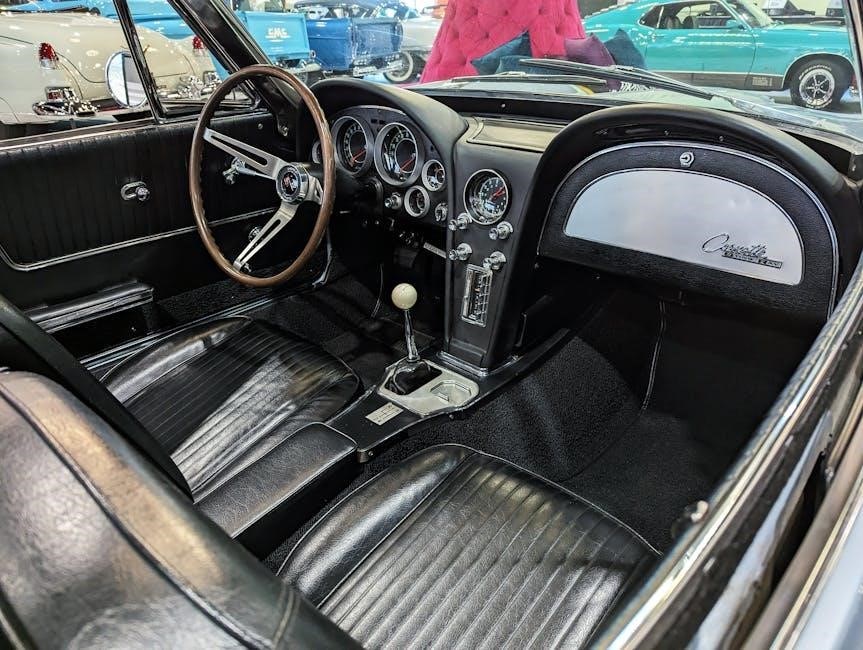
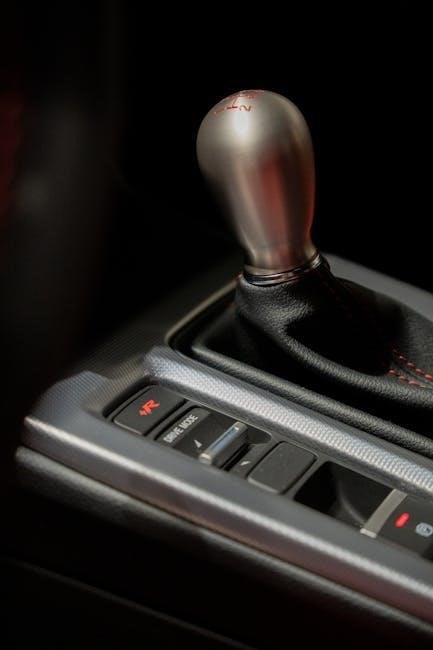
Key Components of a Manual Transmission System
A manual transmission system includes a clutch, gearbox, and shift mechanisms. These components work together to enable driver-controlled gear changes, enhancing precision and fuel efficiency without a torque converter.
2.1 The Clutch System: A Manual Transmission’s Core Component
The clutch system is the heart of a manual transmission. It consists of a clutch disc, pressure plate, and release bearing. When the driver presses the clutch pedal, it disengages the engine from the transmission, allowing gear shifts. Upon release, the clutch engages, transferring power back to the wheels. This mechanical connection provides direct control over power delivery, unlike automatics, which use a torque converter for smooth transitions. The clutch system’s simplicity and efficiency make it a key advantage of manual transmissions.
2.2 Gear Ratios and Manual Shifting Mechanisms
In a manual transmission, gear ratios are designed to optimize speed and torque across different driving conditions. Lower gears provide more torque for acceleration, while higher gears enable efficient cruising. The driver manually selects the appropriate gear using the shift lever, ensuring smooth power delivery. This mechanical system relies on precise engineering to match engine RPM with road speed. The absence of a torque converter means the transmission depends solely on these fixed gear ratios for performance.
The shifting mechanism involves a clutch and gearstick, requiring driver input to engage or disengage gears. This direct control allows for efficient power transfer, unlike automatics, which use fluid coupling. The simplicity of manual systems reduces complexity but demands driver skill for seamless operation.
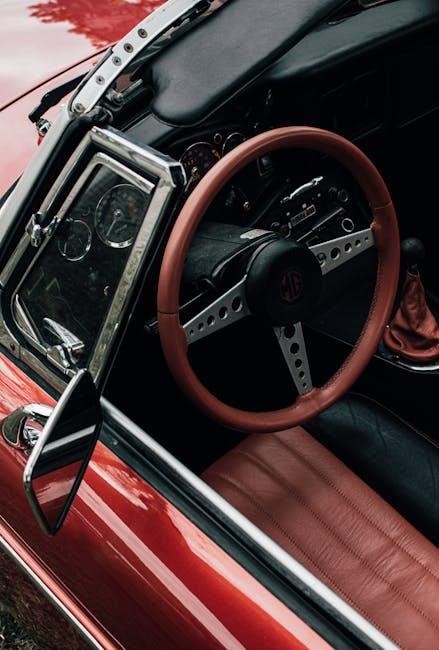
How Manual Transmissions Differ from Automatic Transmissions
Manual transmissions use a clutch for engagement, while automatics rely on a torque converter. Manuals require driver input for gear shifts, offering control and efficiency, whereas automatics operate seamlessly without manual intervention.
3.1 The Absence of a Torque Converter in Manual Transmissions
Manual transmissions do not utilize a torque converter; instead, they rely on a clutch system to transfer power. This eliminates the need for fluid coupling, as manuals require driver input to engage and disengage gears. The absence of a torque converter simplifies the design, reducing weight and complexity. While this enhances fuel efficiency and driver control, it also demands more skill and attention, as the driver must manually manage power delivery during shifts. This contrasts sharply with automatics, which rely on torque converters for seamless, driver-free operation.
3.2 Fluid Coupling vs; Clutch-Based Power Transfer
Fluid coupling, found in automatics via the torque converter, allows smooth power transfer without manual intervention. In contrast, clutch-based systems in manuals require driver engagement to connect and disconnect the engine from the transmission. This mechanical connection provides direct control but demands precise timing to avoid driveline shock. The fluid coupling offers torque multiplication for easier low-speed driving, while clutches deliver more immediate power transfer, enhancing efficiency and driver involvement. These differences shape the driving experiences of automatic and manual transmissions distinctly.
The Function of a Torque Converter in Modern Vehicles
A torque converter in modern vehicles enables smooth power transfer between the engine and transmission. It provides torque multiplication at low speeds, enhancing acceleration and seamless driving experiences.
4.1 Torque Multiplication and Smooth Power Delivery
A torque converter enhances vehicle performance by multiplying torque at low engine speeds, enabling smoother acceleration. It uses fluid coupling to transfer power seamlessly, minimizing drivetrain shocks. This mechanism allows the engine to maintain optimal RPM while the transmission adjusts gears, ensuring efficient power delivery. The converter’s ability to multiply torque is particularly beneficial during initial acceleration and uphill driving, where extra power is needed. Additionally, modern torque converters often feature a lock-up clutch, engaging directly at higher speeds to improve fuel efficiency and reduce slip.
4.2 Why Torque Converters Are Exclusive to Automatic Transmissions
Torque converters are exclusive to automatic transmissions because they provide seamless, clutch-less power transfer. Unlike manual systems, which rely on a mechanical clutch, automatics need fluid coupling to enable smooth gear shifts without driver intervention. The torque converter’s design allows the engine to operate independently of the transmission, accommodating varying speeds and eliminating the need for manual clutch control. This makes it an essential component for automatics, whereas manuals achieve similar functionality through a physical clutch system.
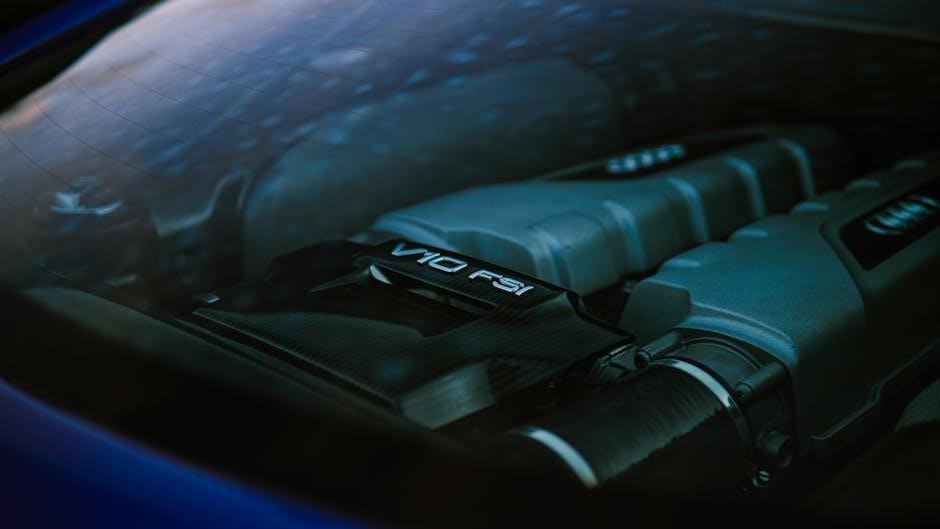
Unique Cases and Exceptions
While rare, some manual transmissions incorporate a torque converter, such as the Garage54 project, demonstrating unconventional applications. These setups are highly specialized and not typical in production vehicles.
5.1 The Garage54 Project: A Manual Transmission with a Torque Converter
The Garage54 project demonstrates a unique application where a manual transmission is paired with a torque converter. This unconventional setup combines the control of a manual system with the smooth power delivery of an automatic. The project showcases how a torque converter can be integrated into a manual gearbox, offering improved low-speed operation and reduced driveline shock. Such configurations are rare but highlight the versatility of transmission design, particularly for extreme applications like racing or heavy-duty use. This innovation sparks interest among engineers and enthusiasts alike.
5.2 Dual-Clutch Transmissions (DCTs) and Their Similarities to Manuals
Dual-Clutch Transmissions (DCTs) share operational similarities with manual transmissions, as both use clutches for gear engagement. Unlike traditional automatics with torque converters, DCTs employ two clutches to pre-select gears, enabling rapid shifts. This design mirrors manual transmissions in delivering precise control and efficiency. However, DCTs automate the clutch actuation, combining the responsiveness of manuals with the convenience of automatics. Despite their complexity, DCTs offer a bridge between manual and automatic transmissions, appealing to drivers seeking both performance and ease.
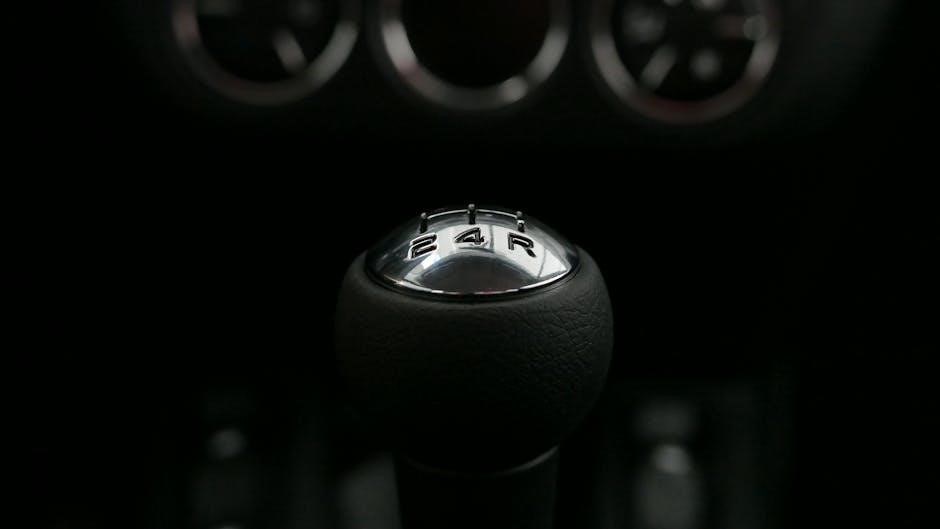
Advantages of Manual Transmissions Without a Torque Converter
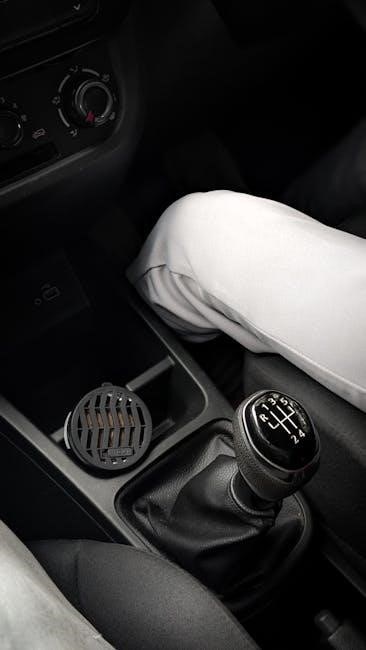
Manual transmissions without a torque converter offer increased efficiency, lower production costs, and reduced maintenance. They provide better fuel economy and driver control, making them cost-effective and simpler.
6.1 Better Fuel Efficiency and Driver Control
Manual transmissions without a torque converter deliver superior fuel efficiency due to their direct power transfer. Drivers have precise control over gear shifts, enhancing performance and reducing energy loss. This setup minimizes mechanical complexity, allowing engines to operate within optimal RPM ranges, thereby improving mileage. Additionally, the absence of a torque converter eliminates parasitic power losses associated with fluid coupling, making manual transmissions more economical for everyday driving. This direct connection between driver and vehicle fosters a more engaging and efficient driving experience overall.
6.2 Reduced Complexity and Maintenance Costs
Manual transmissions simplify the drivetrain by eliminating the torque converter, reducing mechanical complexity. This results in lower production and maintenance costs. Fewer components mean less that can fail, minimizing repair needs. The clutch, while wearing over time, is generally more cost-effective to replace than a torque converter. Additionally, manual transmissions often require less specialized fluid and servicing, further lowering long-term ownership expenses. This straightforward design enhances reliability and reduces the financial burden of upkeep compared to automatic systems.
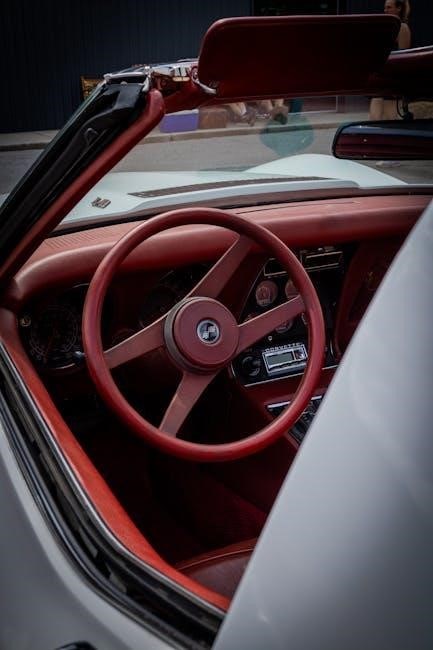
Challenges and Limitations
Manual transmissions require driver skill and engagement, which can be challenging for inexperienced drivers. They are also prone to driveline shock and power loss during shifting.
7.1 The Need for Driver Skill and Engagement
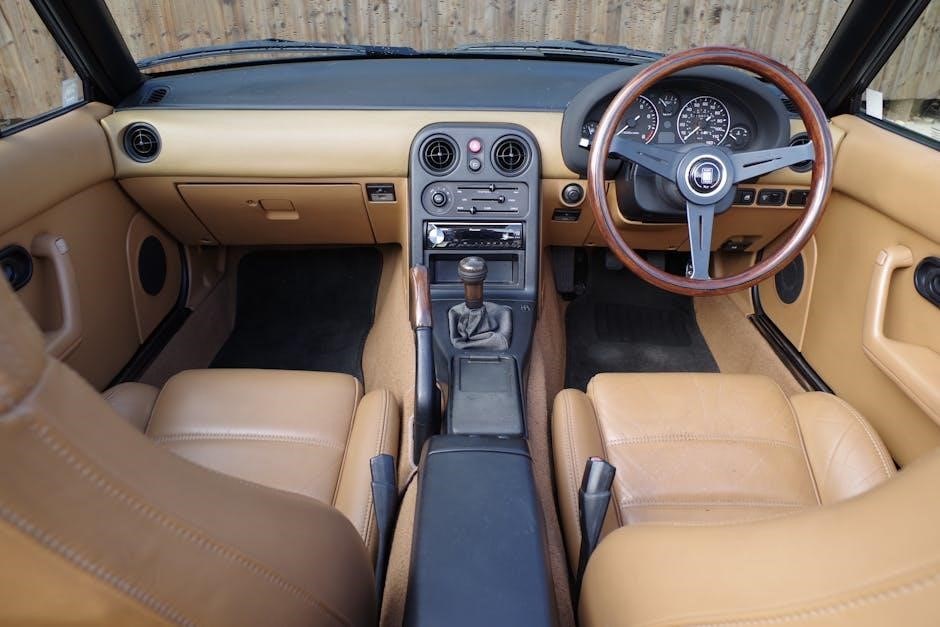
Manual transmissions demand significant driver involvement, requiring precise coordination of clutch and accelerator pedals. This necessitates practice to master smooth shifting, especially in stop-and-go traffic. Inexperienced drivers may struggle with stalling or jerky starts, highlighting the importance of skill development. Additionally, constant gear changes can be fatiguing on long drives, making manual transmissions less appealing for those seeking convenience. However, many enthusiasts appreciate the control and connection it provides to the vehicle’s performance.
7.2 Driveline Shock and Power Loss in Manual Systems
Manual transmissions can experience driveline shock due to abrupt clutch engagement, potentially leading to power loss and wear on components. Unlike automatics with torque converters, manuals lack fluid coupling, making them more susceptible to shock during rapid shifting or aggressive acceleration. This can result in momentary power disconnection and reduced efficiency, especially in high-torque scenarios. The absence of torque multiplication exacerbates these issues, highlighting a trade-off between driver control and smooth power delivery in manual systems compared to automatics.

8.1 Final Thoughts on Manual Transmissions and Torque Converters
Manual transmissions and torque converters serve distinct purposes. Manuals offer direct driver control and efficiency through clutches, while torque converters in automatics provide seamless power delivery. The choice between them hinges on driving style and preferences. Manuals excel in fuel efficiency and cost-effectiveness, whereas automatics prioritize convenience. Both systems have evolved to meet modern demands, ensuring optimal performance tailored to specific needs. Understanding their differences helps drivers make informed decisions about their vehicle preferences.